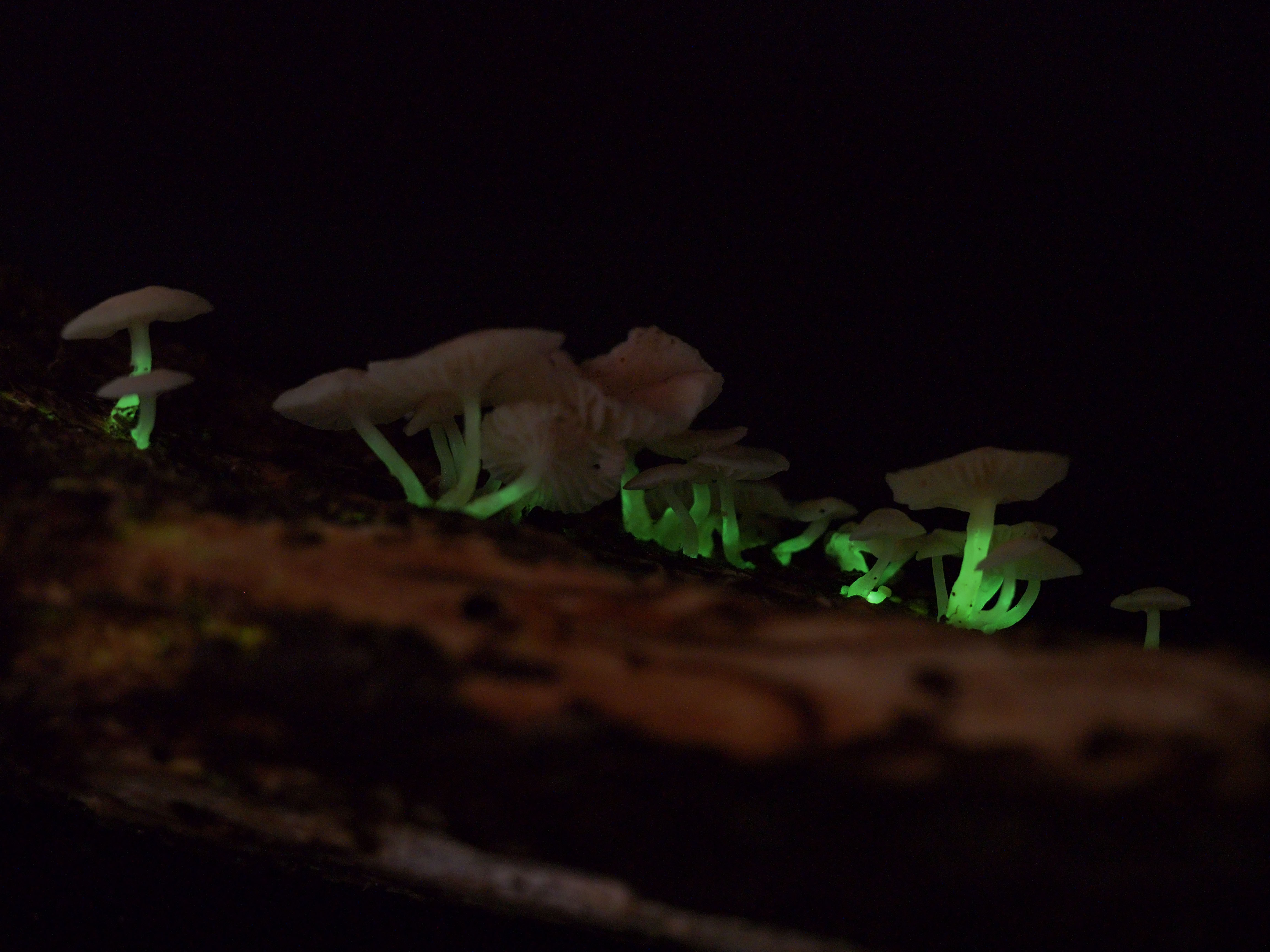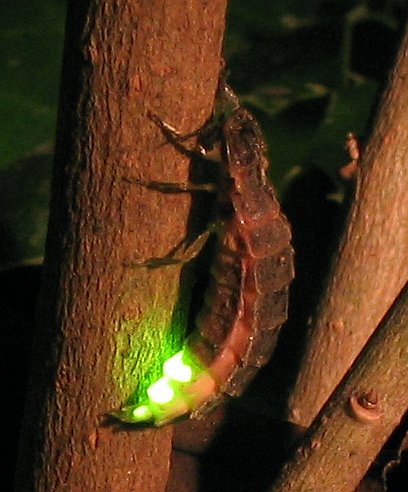|
Mycena Daisyogunensis
''Mycena daisyogunensis'' is a species of agaric fungus in the family Mycenaceae. The fruit bodies of the fungus are bioluminescent. It was collected from Daisyogun Cave in Miyazaki Prefecture on Kyushu, Japan. See also *List of bioluminescent fungi ] Found largely in temperate and tropical climates, currently there are more than 112 known species of bioluminescent fungi, all of which are members of the order Agaricales (Basidiomycota) with one exceptional ascomycete belonging to the order Xy ... References Mycena, daisyogunensis Bioluminescent fungi Fungi described in 1951 Fungi of Japan Fungus species {{Agaricales-stub ... [...More Info...] [...Related Items...] OR: [Wikipedia] [Google] [Baidu] |
Agaric
An agaric () is a type of fungus fruiting body characterized by the presence of a pileus (cap) that is clearly differentiated from the stipe (stalk), with lamellae (gills) on the underside of the pileus. In the UK, agarics are called "mushrooms" or "toadstools". In North America they are typically called "gilled mushrooms". "Agaric" can also refer to a basidiomycete species characterized by an agaric-type fruiting body. Archaically, agaric meant 'tree-fungus' (after Latin ''agaricum''); however, that changed with the Linnaean interpretation in 1753 when Linnaeus used the generic name ''Agaricus'' for gilled mushrooms. Most species of agaricus belong to the order Agaricales in the subphylum Agaricomycotina. The exceptions, where agarics have evolved independently, feature largely in the orders Russulales, Boletales, Hymenochaetales, and several other groups of basidiomycetes. Old systems of classification placed all agarics in the Agaricales and some (mostly older) sources use ... [...More Info...] [...Related Items...] OR: [Wikipedia] [Google] [Baidu] |
Mycenaceae
The Mycenaceae are a family of fungi in the order Agaricales. According to the ''Dictionary of the Fungi'' (10th edition, 2008), the family contains 10 genera and 705 species. This is one of several families that were separated from the Tricholomataceae as a result of phylogenetic analyses. Taxa in the Mycenaceae are saprobic, have a cosmopolitan distribution, and are found in almost all ecological zones. The family was circumscribed by Caspar van Overeem in 1926. The extinct genus ''Protomycena'', described from Burdigalian age Dominican amber found on the island of Hispaniola is one of four known agaric genera in the fossil record. Phylogeny A large-scale phylogenetic analysis study of the Agaricales published by a consortium of mycologists in 2002 adopted the name Mycenaceae for a strongly supported clade consisting of ''Dictyopanus'', '' Favolaschia'', ''Mycena ''Mycena'' is a large genus of small saprotrophic mushrooms that are rarely more than a few centimeters in ... [...More Info...] [...Related Items...] OR: [Wikipedia] [Google] [Baidu] |
Basidiocarp
In fungi, a basidiocarp, basidiome, or basidioma () is the sporocarp of a basidiomycete, the multicellular structure on which the spore-producing hymenium is borne. Basidiocarps are characteristic of the hymenomycetes; rusts and smuts do not produce such structures. As with other sporocarps, epigeous (above-ground) basidiocarps that are visible to the naked eye (especially those with a more or less agaricoid morphology) are commonly referred to as mushrooms, while hypogeous (underground) basidiocarps are usually called false truffles. Structure All basidiocarps serve as the structure on which the hymenium is produced. Basidia are found on the surface of the hymenium, and the basidia ultimately produce spores. In its simplest form, a basidiocarp consists of an undifferentiated fruiting structure with a hymenium on the surface; such a structure is characteristic of many simple jelly and club fungi. In more complex basidiocarps, there is differentiation into a stipe, a pileus ... [...More Info...] [...Related Items...] OR: [Wikipedia] [Google] [Baidu] |
Bioluminescent
Bioluminescence is the production and emission of light by living organisms. It is a form of chemiluminescence. Bioluminescence occurs widely in marine vertebrates and invertebrates, as well as in some Fungus, fungi, microorganisms including some bioluminescent bacteria, and terrestrial arthropods such as Firefly, fireflies. In some animals, the light is bacteriogenic, produced by symbiosis, symbiotic bacteria such as those from the genus ''Vibrio''; in others, it is autogenic, produced by the animals themselves. In a general sense, the principal chemical reaction in bioluminescence involves a light-emitting molecule and an enzyme, generally called luciferin and luciferase, respectively. Because these are generic names, luciferins and luciferases are often distinguished by the species or group, e.g. firefly luciferin. In all characterized cases, the enzyme Catalysis, catalyzes the Redox, oxidation of the luciferin. In some species, the luciferase requires other Cofactor (bio ... [...More Info...] [...Related Items...] OR: [Wikipedia] [Google] [Baidu] |
Miyazaki Prefecture
is a prefecture of Japan located on the island of Kyūshū. Miyazaki Prefecture has a population of 1,073,054 (1 June 2019) and has a geographic area of 7,735 km2 (2,986 sq mi). Miyazaki Prefecture borders Ōita Prefecture to the north, Kumamoto Prefecture to the northwest, and Kagoshima Prefecture to the southwest. Miyazaki is the capital and largest city of Miyazaki Prefecture, with other major cities including Miyakonojō, Nobeoka, and Hyūga. Miyazaki Prefecture is located in southeastern Kyūshū on Japan's Pacific coast, with its coastline extending from Nobeoka near the entrance to the Bungo Channel to Shibushi Bay in Kushima. History Historically, after the Meiji Restoration, Hyūga Province was renamed Miyazaki Prefecture. In Japan, Miyazaki Prefecture was first created in 1873 when Mimitsu Prefecture was merged with parts of Miyakonojō Prefecture. The first Miyazaki existed only until 1876 when it was merged (back) into Kagoshima Prefecture. Under publ ... [...More Info...] [...Related Items...] OR: [Wikipedia] [Google] [Baidu] |
Kyushu
is the third-largest island of Japan's five main islands and the most southerly of the four largest islands ( i.e. excluding Okinawa). In the past, it has been known as , and . The historical regional name referred to Kyushu and its surrounding islands. Kyushu has a land area of and a population of 14,311,224 in 2018. In the 8th-century Taihō Code reforms, Dazaifu was established as a special administrative term for the region. Geography The island is mountainous, and Japan's most active volcano, Mount Aso at , is on Kyushu. There are many other signs of tectonic activity, including numerous areas of hot springs. The most famous of these are in Beppu, on the east shore, and around Mt. Aso in central Kyushu. The island is separated from Honshu by the Kanmon Straits. Being the nearest island to the Asian continent, historically it is the gateway to Japan. The total area is which makes it the 37th largest island in the world. It's slightly larger than Taiwan island . ... [...More Info...] [...Related Items...] OR: [Wikipedia] [Google] [Baidu] |
List Of Bioluminescent Fungi
] Found largely in temperate and tropical climates, currently there are more than 112 known species of bioluminescent fungi, all of which are members of the order Agaricales (Basidiomycota) with one exceptional ascomycete belonging to the order Xylariales. All known bioluminescent Agaricales are mushroom-forming, white-spored agarics that belong to four distinct evolutionary lineages. The Omphalotus lineage (comprising the genera ''Omphalotus'' and '' Neonothopanus'') contains 12 species, the ''Armillaria'' lineage has 10 known species, while the Mycenoid lineage ('' Favolachia, Mycena'', '' Panellus'', '' Prunulus'', '' Roridomyces'') has more than 50 species. The recently discovered Lucentipes lineage contains two species, ''Mycena lucentipes'' and '' Gerronema viridilucens'', which belong to a family that has not yet been formally named. ''Armillaria mellea'' is the most widely distributed of the luminescent fungi, found across Asia, Europe, North America, and South Africa. Bi ... [...More Info...] [...Related Items...] OR: [Wikipedia] [Google] [Baidu] |
Mycena
''Mycena'' is a large genus of small saprotrophic mushrooms that are rarely more than a few centimeters in width. They are characterized by a white spore print, a small conical or bell-shaped cap, and a thin fragile stem. Most are gray or brown, but a few species have brighter colors. Most have a translucent and striate cap, which rarely has an incurved margin. The gills are attached and usually have cystidia. Some species, like ''Mycena haematopus'', exude a latex when the stem is broken, and many species have a chlorine or radish-like odor. Overview ''Mycenas'' are hard to identify to species and some are distinguishable only by microscopic features such as the shape of the cystidia. Some species are edible, while others contain toxins, but the edibility of most is not known, as they are likely too small to be useful in cooking. ''Mycena pura'' contains the mycotoxin muscarine, but the medical significance of this is unknown. Over 58 species are known to be bioluminescent, ... [...More Info...] [...Related Items...] OR: [Wikipedia] [Google] [Baidu] |
Bioluminescent Fungi
Bioluminescence is the production and emission of light by living organisms. It is a form of chemiluminescence. Bioluminescence occurs widely in marine vertebrates and invertebrates, as well as in some fungi, microorganisms including some bioluminescent bacteria, and terrestrial arthropods such as fireflies. In some animals, the light is bacteriogenic, produced by symbiotic bacteria such as those from the genus ''Vibrio''; in others, it is autogenic, produced by the animals themselves. In a general sense, the principal chemical reaction in bioluminescence involves a light-emitting molecule and an enzyme, generally called luciferin and luciferase, respectively. Because these are generic names, luciferins and luciferases are often distinguished by the species or group, e.g. firefly luciferin. In all characterized cases, the enzyme catalyzes the oxidation of the luciferin. In some species, the luciferase requires other cofactors, such as calcium or magnesium ions, and sometime ... [...More Info...] [...Related Items...] OR: [Wikipedia] [Google] [Baidu] |
Fungi Described In 1951
A fungus ( : fungi or funguses) is any member of the group of eukaryotic organisms that includes microorganisms such as yeasts and molds, as well as the more familiar mushrooms. These organisms are classified as a kingdom, separately from the other eukaryotic kingdoms, which by one traditional classification include Plantae, Animalia, Protozoa, and Chromista. A characteristic that places fungi in a different kingdom from plants, bacteria, and some protists is chitin in their cell walls. Fungi, like animals, are heterotrophs; they acquire their food by absorbing dissolved molecules, typically by secreting digestive enzymes into their environment. Fungi do not photosynthesize. Growth is their means of mobility, except for spores (a few of which are flagellated), which may travel through the air or water. Fungi are the principal decomposers in ecological systems. These and other differences place fungi in a single group of related organisms, named the ''Eumycota'' (''true fungi' ... [...More Info...] [...Related Items...] OR: [Wikipedia] [Google] [Baidu] |
Fungi Of Japan
A fungus ( : fungi or funguses) is any member of the group of eukaryotic organisms that includes microorganisms such as yeasts and molds, as well as the more familiar mushrooms. These organisms are classified as a kingdom, separately from the other eukaryotic kingdoms, which by one traditional classification include Plantae, Animalia, Protozoa, and Chromista. A characteristic that places fungi in a different kingdom from plants, bacteria, and some protists is chitin in their cell walls. Fungi, like animals, are heterotrophs; they acquire their food by absorbing dissolved molecules, typically by secreting digestive enzymes into their environment. Fungi do not photosynthesize. Growth is their means of mobility, except for spores (a few of which are flagellated), which may travel through the air or water. Fungi are the principal decomposers in ecological systems. These and other differences place fungi in a single group of related organisms, named the ''Eumycota'' (''true f ... [...More Info...] [...Related Items...] OR: [Wikipedia] [Google] [Baidu] |






